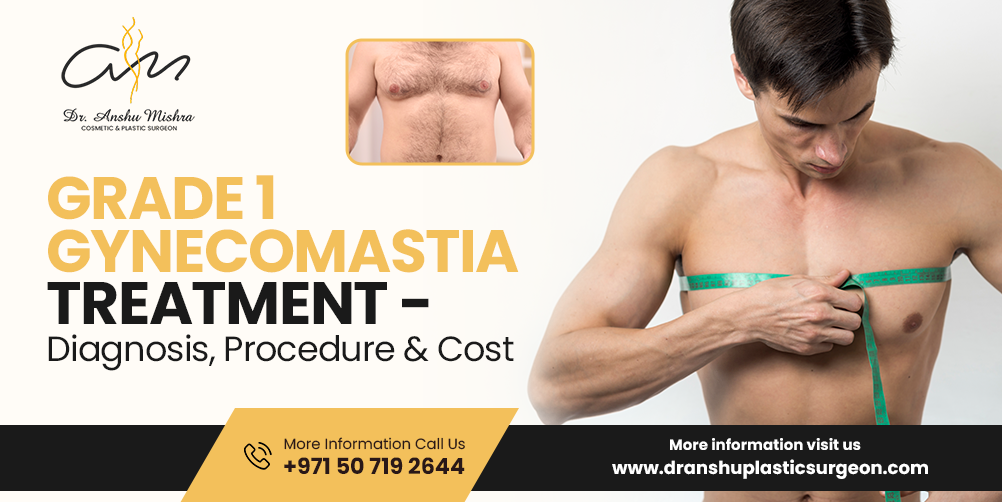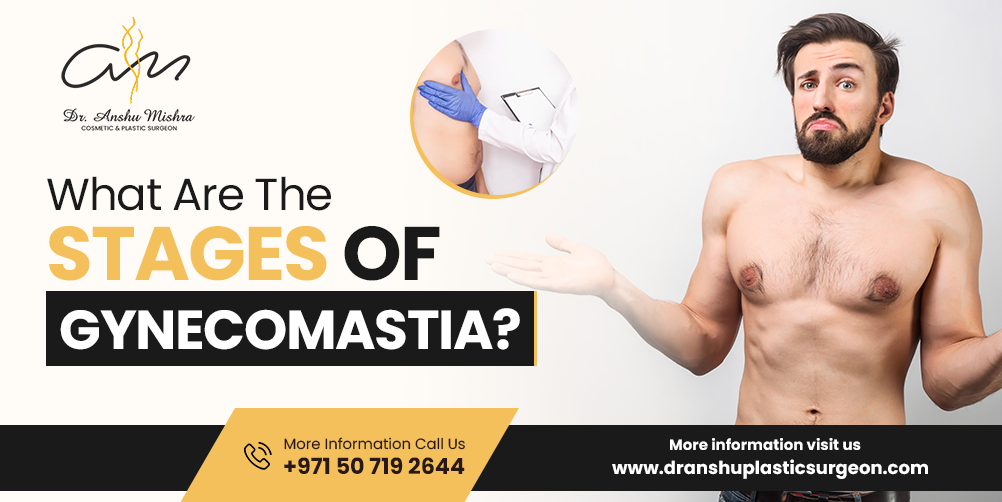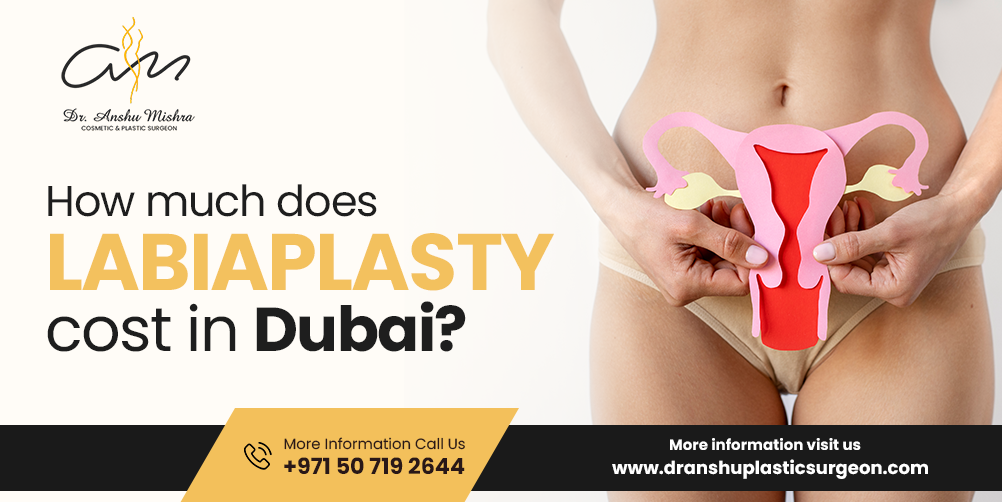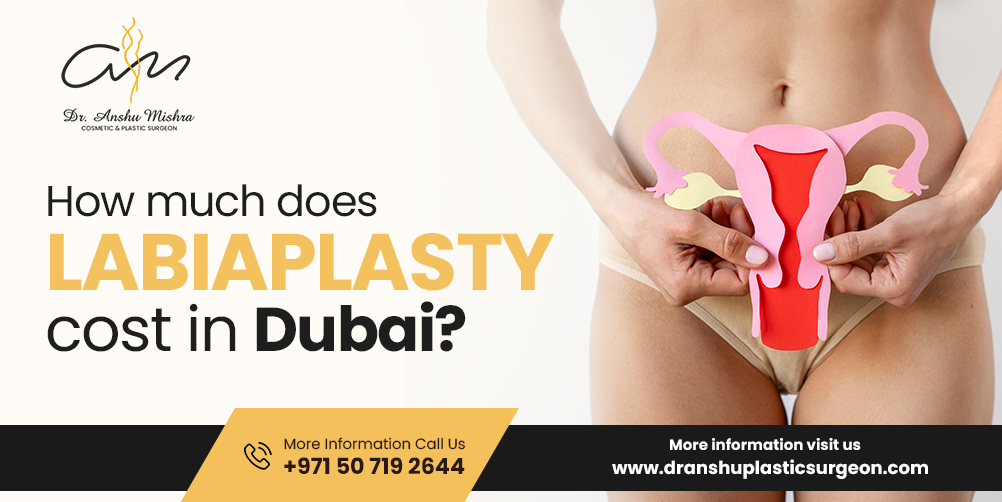Gynecomastia is a condition that affects men, leading to the enlargement of breast tissue. This can lead to the appearance of “man boobs,” which can be a source of embarrassment and insecurity for many men. However, it can be difficult to tell if the breast tissue is the result of gynecomastia or simply a buildup of fat.
In this blog post, we will discuss the differences between gynecomastia and pseudo gynecomastia and how to tell if you have the condition.
Table of Contents
ToggleWhat is Gynecomastia?
First, let’s define what gynecomastia is. The term comes from the Greek words “gyne,” meaning woman, and “mastos,” meaning breast. Gynecomastia is the result of an imbalance of hormones in the body, specifically an increase in oestrogen and a decrease in testosterone. This hormonal imbalance can be caused by a variety of factors, such as puberty, ageing, certain medications, and certain medical conditions.
How to know if I have Gynecomastia?
How to tell if you have gynecomastia or just the fat deposit in the chest ? It depends on many factors, as explained below.
| Also Read: Is gynecomastia painful? |

Location of the tissue
How to know if you have gynecomastia or fat can be determined by the location of the tissue. Gynecomastia is a condition that affects the glandular tissue in the breast, while fat is located in the adipose tissue. This means that if you press on the breast tissue and it feels firm and rubbery, it is likely to be glandular tissue and could be a sign of gynecomastia. On the other hand, if the tissue feels soft and squishy, it is likely to be fat.
The Overall shape of the Breast
Gynecomastia or fat- how to tell can also be determined in another way, i.e., by looking at the overall shape of the breast. Gynecomastia typically causes the breast to become round and protruding while fat causes the breast to become more evenly distributed throughout the chest. Additionally, in cases of gynecomastia, the breast tissue will be concentrated primarily around the areola and may appear as a lump or puffiness.
It’s also important to note that gynecomastia is not always symmetrical, meaning that one breast may be affected more than the other. Fat, on the other hand, is typically distributed evenly throughout the chest.
Overall Body Composition
How to tell if I have gynecomastia or just fat can also be determined by overall body composition. If you are overweight or obese, it’s more likely that the breast tissue is due to excess fat rather than gynecomastia.
However, even if you are at a healthy weight, it’s still possible to have gynecomastia. It’s also important to note that weight loss alone may not be enough to improve the appearance of the breast tissue in cases of gynecomastia.
Presence of other Symptoms
How do you know if you have gynecomastia or fat can also be determined by the presence of any other symptoms. Gynecomastia is often accompanied by other symptoms such as breast tenderness, pain, and enlargement of the breast tissue. Fat, on the other hand, typically does not cause any additional symptoms.
| Also Read: Exercises for Man Boobs – Gynecomastia |
Gynecomastia Self-test
Gynecomastia, or the enlargement of breast tissue in males, can be diagnosed through a physical examination by a doctor. Some methods for gynecomastia self-test include:
- Pinch test: Pinch the breast tissue between your thumb and fingers to determine if there is a firm mass or not.
- Examination in front of a mirror: Look at your chest while standing in front of a mirror to observe any changes in the shape or size of your breasts.
- Lie down and press test: Lie down on a flat surface and press on the lower half of your breast to check for lumps or firmness.
It’s important to note that self-examinations are not a replacement for regular check-ups with a healthcare professional. If you have any concerns about your breast health, it’s best to see a doctor.
If you are unsure whether you have gynecomastia or are just fat, it is important to consult with a healthcare professional. A doctor or a specialist can perform a physical examination and may order certain tests, such as blood tests, to determine the cause of the breast tissue.
Conclusion
In conclusion, gynecomastia and fat are not the same thing and have different causes, symptoms, and characteristics. Gynecomastia is a condition caused by an imbalance of hormones that affects the glandular tissue in the breast, while fat is located in the adipose tissue ( subcutaneous tissue ). To tell the difference between the two, you can look at the location and consistency of the tissue, the overall shape of the breast, and the presence of any additional symptoms. If you suspect that you may have gynecomastia, it is important to consult with a healthcare professional for a proper diagnosis and treatment.
Why Choose Dr. Anshu Mishra?
Dr. Anshu Mishra is a highly skilled and experienced cosmetic surgeon. With over 11 years of clinical experience, she is a leading expert in the field of plastic surgery.
She specialises in treating gynecomastia, using the latest techniques and technologies to deliver optimal results for her patients. Her personalised approach to patient care and attention to detail set her apart as a top choice for those seeking gynecomastia treatment in Dubai. Dr. Anshu Mishra is dedicated to helping her patients achieve their desired outcomes.
FAQ
-
How can I distinguish between fatty chest and gynecomastia?
Male breast tissue enlargement, or gynaecomastia, is distinct from fat accumulation in a few important aspects. The kind of tissue involved is one of the main differences. Gynaecomastia involves glandular tissue enlargement, which when compressed feels hard and pliable. Fat deposits, on the other hand, feel mushy and soft. Additionally, gynaecomastia often results in a more rounded, projecting breast form, whereas fat distribution typically leaves the chest seeming flatter.
-
Where is the tissue in gynecomastia compared to the fat?
You can tell the difference between fat and gynecomastia based on where the tissue is located. The glandular tissue, which is mostly found around the areola, is impacted by gynecomastia, giving the region a more defined and occasionally lumpyor puffy look. On the other hand, fat is not concentrated around the areola but rather is more equally distributed over the chest. Furthermore, asymmetry resulting from gynecomastia might cause one breast to be bigger than the other, but fat usually accumulates symmetrically.
-
Does my whole body composition affect whether I have fat deposit in chest or have gynecomastia?
Yes, a major factor in establishing whether your chest growth is from fat or gynaecomastia is your general body composition. It is more likely that the enlargement is fat-related if you are obese or overweight. Nonetheless, gynaecomastia can affect people of various body types, including those who have healthy weight . Gynaecomastia may be the reason if you continue to see breast tissue after losing weight.
-
What additional symptoms are related to gynecomastia?
Other symptoms of gynaecomastia include discomfort, soreness, and a visible growth of the breast tissue. Fat accumulation is normally asymptomatic, thus these symptoms are not frequently related to it. To determine whether gynecomastia is present ,if you have these symptoms in addition to breast tissue enlargement or puffy nipples, it’s best to speak with a healthcare provider.
-
Is it possible to test yourself for gynecomastia?
It is possible to self-diagnose gynecomastia in some ways, but doing so shouldn’t take the place of a medical diagnosis. You may check for changes in shape or size in your chest by looking in the mirror or by squeezing the breast tissue to feel for a solid lump. Another way is to lie down and feel for stiffness or lumps on the bottom half of your breast. These tests are, however, preliminary, and a medical professional’s assessment is advised to obtain a precise diagnosis.
-
What to do If I think I have gynecomastia?
Seeking medical advice is essential if you think you may have gynecomastia. To ascertain the underlying reason for the breast enlargement, a physician can do a physical examination and may prescribe testing, such as imaging or blood tests. By separating gynaecomastia from other disorders early on, you can ensure that you receive the right care and treatment.
-
If gynecomastia is identified, how is it treated?
Depending on the origin and degree of gynaecomastia, treatment options vary. Gentle instances could go away on their own, especially if they have to do with puberty. For recurrent instances, treatment options include hormonal imbalance correction drugs or surgical removal of extra tissue, like liposuction or gland excision. Depending on each person’s needs, a professional can assist in determining the appropriate course of action.















